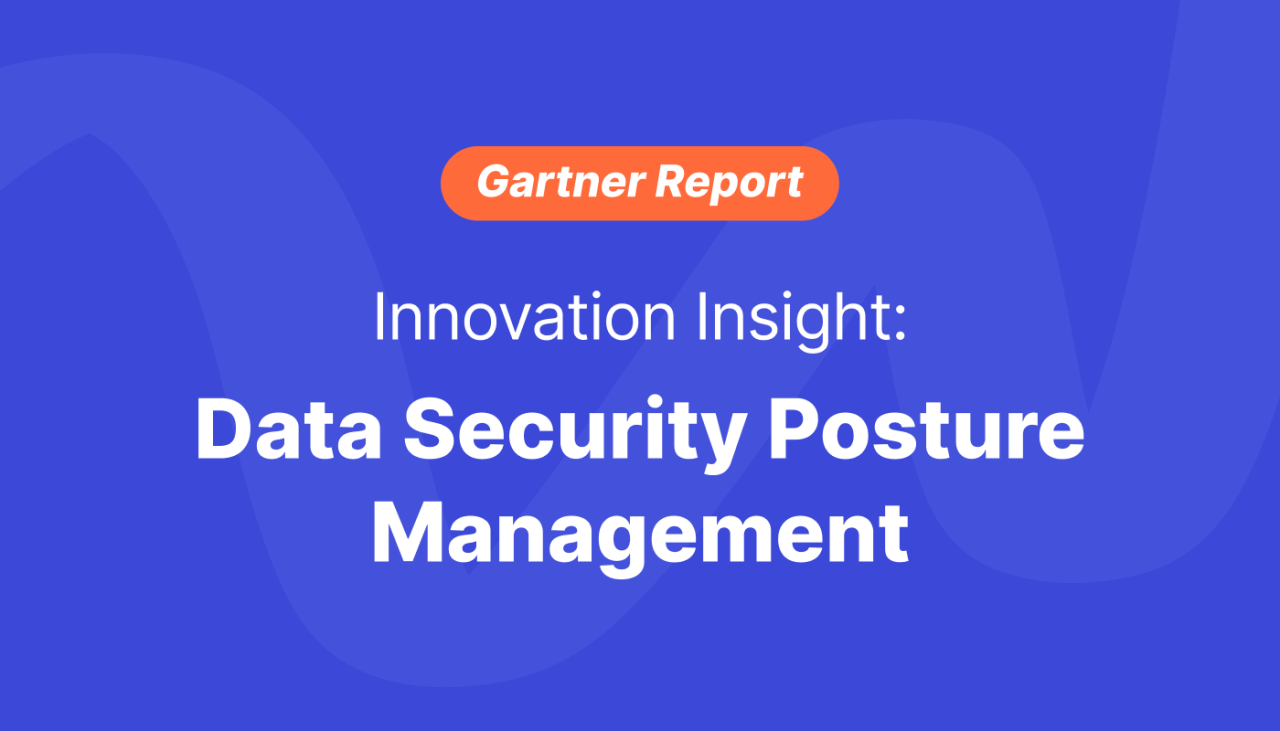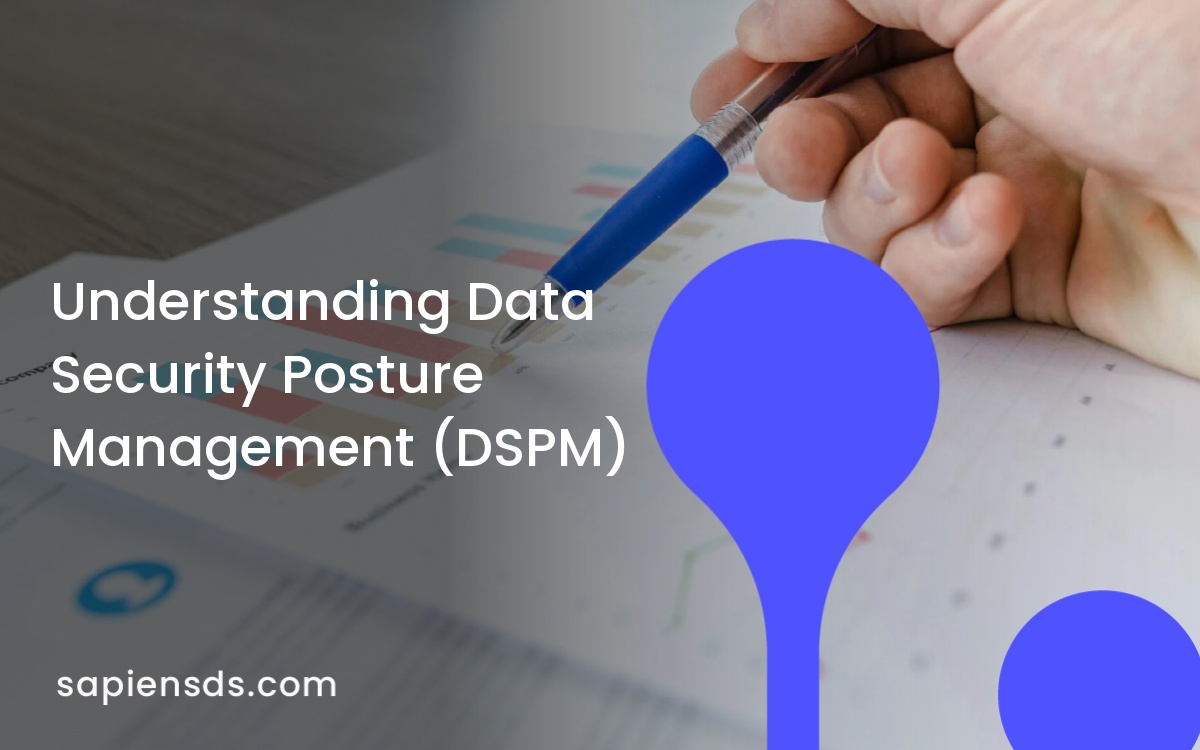
DSPM Essential for Gen AI & Copilot Tool Deployment
Data security posture management dspm is an important first step in deploying gen ai and copilot tools – Data security posture management (DSPM) is an important first step in deploying gen AI and copilot tools. Think of it like this: you wouldn’t build a house without a solid foundation, right? Similarly, integrating powerful AI tools without a robust security framework is a recipe for disaster. This post dives into why DSPM is crucial for protecting your data in this exciting – and potentially risky – new era of AI-powered workflows.
We’ll explore the inherent risks, the role of DSPM in mitigation, and practical steps for implementation.
We’ll cover everything from defining DSPM in the context of generative AI to building a hypothetical framework for your company. We’ll also explore real-world examples of data breaches caused by inadequate AI security and offer actionable best practices to help you stay ahead of the curve. Get ready to learn how to harness the power of AI while keeping your data safe and sound!
Defining Data Security Posture Management (DSPM) in the Context of Generative AI
Generative AI and Copilot tools are revolutionizing workflows, but their integration brings significant data security risks. Understanding and managing these risks effectively requires a robust Data Security Posture Management (DSPM) strategy. This post dives into what DSPM is, its core components, the specific challenges it addresses in the context of generative AI, and a potential framework for implementation.DSPM is the process of continuously assessing, monitoring, and improving an organization’s overall data security posture.
It’s about proactively identifying vulnerabilities and weaknesses before they can be exploited, rather than reacting to breaches after the fact. A strong DSPM program provides a holistic view of an organization’s data security landscape, enabling informed decision-making and effective risk mitigation.
Core Components of a Robust DSPM Strategy
A comprehensive DSPM strategy relies on several key components working in concert. These include continuous security assessments (vulnerability scanning, penetration testing), real-time threat detection and response mechanisms (SIEM, SOAR), data loss prevention (DLP) tools, access control management (IAM), and regular security awareness training for employees. Effective communication and collaboration between security teams and other departments are also crucial.
Getting your Data Security Posture Management (DSPM) in order is crucial before diving into generative AI and Copilot tools; you need a solid foundation for secure development. This is especially true when considering the rapid development capabilities offered by platforms like those discussed in this great article on domino app dev, the low-code and pro-code future , where speed and efficiency can sometimes overshadow security concerns.
So, prioritize DSPM – it’s your best defense against potential vulnerabilities introduced by these powerful new tools.
Without a holistic approach, gaps in security can easily emerge, leaving organizations vulnerable.
Challenges DSPM Addresses When Deploying Generative AI and Copilot Tools
Generative AI and Copilot tools introduce unique challenges to data security. The very nature of these tools – generating new content based on existing data – increases the risk of data leakage, intellectual property theft, and the unintentional exposure of sensitive information. For example, a Copilot tool trained on confidential client data could inadvertently generate output containing that data.
DSPM addresses these challenges by providing the mechanisms to identify and mitigate these risks through robust data classification, access control, and monitoring of tool usage and output. Furthermore, the potential for adversarial attacks targeting these tools needs to be considered and addressed proactively.
Hypothetical DSPM Framework for Generative AI Integration
A hypothetical DSPM framework for a company integrating generative AI might look like this:First, a comprehensive data inventory and classification system would be implemented to clearly identify sensitive data and its location. Then, access controls would be strictly enforced, limiting access to generative AI tools and the data they use based on the principle of least privilege. Next, robust monitoring and logging of tool usage, data access, and generated output would be put in place to detect anomalies and potential security breaches.
Finally, regular security assessments and penetration testing would be conducted to identify and address vulnerabilities. This framework would incorporate automated processes where possible, to streamline security operations and ensure continuous monitoring. Regular security awareness training would be critical to ensure employees understand the risks and best practices associated with using generative AI tools.
Risks Associated with Generative AI and Copilot Tools
The rapid adoption of generative AI and copilot tools presents significant data security challenges. These powerful technologies, while offering immense potential, introduce new vulnerabilities that organizations must address proactively to prevent data breaches and maintain confidentiality, integrity, and availability. Understanding these risks is crucial for building a robust data security posture.Generative AI models, particularly large language models (LLMs), inherently process vast amounts of data during training and operation.
This data, often including sensitive information, poses a significant risk if not properly secured. Copilot tools, integrated into development environments, further amplify these risks by potentially exposing sensitive code and project details.
Data Leakage and Exposure
Generative AI models can inadvertently leak sensitive data through their outputs. If the model is trained on data containing personally identifiable information (PII), trade secrets, or other confidential material, it may inadvertently reproduce or generate similar information in its responses. This is especially concerning with copilot tools, where developers might unintentionally expose confidential code snippets or project details while seeking assistance.
The risk is exacerbated by the potential for “prompt injection” attacks, where malicious prompts are crafted to elicit sensitive information from the model.
Data Poisoning and Adversarial Attacks
Data poisoning involves introducing malicious data into the training dataset of a generative AI model. This can lead to the model generating biased, inaccurate, or even malicious outputs. Adversarial attacks, on the other hand, involve manipulating the input to the model to produce unintended results. Both these attacks can compromise the integrity and confidentiality of data handled by the model.
For copilot tools, this could manifest as malicious code suggestions or the generation of insecure code.
Unauthorized Access and Model Exploitation
Generative AI models and the underlying infrastructure require access to significant computational resources and datasets. Unauthorized access to these resources can lead to data breaches and the misuse of the model for malicious purposes. For example, an attacker might gain access to the model’s training data or use the model itself to generate fraudulent content or perform unauthorized actions.
Copilot tools, if not properly secured, could also be exploited to access sensitive project information or deploy malicious code.
Examples of Real-World Data Breaches
The following table highlights some examples of data breaches related to inadequate data security in AI deployments (Note: Specific details of some breaches are often not publicly available due to confidentiality reasons. This table represents a general overview of types of incidents and their potential impact):
| Incident | Cause | Impact | Mitigation |
|---|---|---|---|
| Exposure of sensitive training data used in a large language model | Insufficient data anonymization and access control during model training | Potential exposure of PII, trade secrets, and other confidential information | Implement robust data anonymization techniques, access control mechanisms, and secure data storage solutions |
| Malicious prompt injection leading to data leakage | Lack of input validation and sanitization in the AI application | Unauthorized access to sensitive data through crafted prompts | Implement robust input validation and sanitization techniques, and monitor user prompts for suspicious activity |
| Unauthorized access to AI model infrastructure | Weak security configurations and lack of proper authentication/authorization | Data theft, model manipulation, and service disruption | Implement strong security configurations, multi-factor authentication, and regular security audits |
| Deployment of insecure code generated by a copilot tool | Lack of code review and security testing of code generated by AI assistance tools | Vulnerabilities in the application, leading to potential data breaches or system compromise | Implement rigorous code review processes, integrate security testing into the development workflow, and use secure coding practices |
DSPM’s Role in Mitigating Generative AI Risks

Generative AI and Copilot tools offer incredible potential, but their deployment introduces significant data security challenges. Data Security Posture Management (DSPM) acts as a crucial safeguard, providing a framework to identify, assess, and mitigate these risks effectively, ensuring responsible and secure AI implementation. It bridges the gap between the exciting possibilities of AI and the critical need for robust data protection.DSPM helps reduce the risks associated with generative AI and Copilot tools by providing a comprehensive view of your organization’s data security posture.
This holistic view allows for proactive identification of vulnerabilities before they can be exploited, leading to more effective risk management. Instead of reacting to breaches, DSPM enables a proactive, preventative approach to data security.
Data Loss Prevention and Access Control
DSPM facilitates the implementation of robust data loss prevention (DLP) measures. This includes monitoring data flows to and from generative AI systems, ensuring sensitive information isn’t inadvertently leaked or exposed during processing. Furthermore, DSPM strengthens access control mechanisms, limiting who can access and interact with the AI systems and the data they handle. This granular control minimizes the risk of unauthorized access or modification of sensitive data.
For example, DSPM can enforce least privilege access, ensuring that only authorized personnel with a specific need can access the AI system and its associated data. This limits the potential damage from insider threats or malicious actors.
Vulnerability Management and Threat Detection
DSPM plays a key role in identifying and addressing vulnerabilities within the generative AI infrastructure. Regular security assessments, vulnerability scanning, and penetration testing, all facilitated by a DSPM system, uncover weaknesses that malicious actors could exploit. Furthermore, DSPM integrates with threat detection systems, providing real-time monitoring and alerts for suspicious activities, such as unauthorized access attempts or unusual data access patterns.
Early detection and response to threats are crucial for minimizing the impact of security incidents. A well-implemented DSPM strategy can automatically trigger alerts upon detection of anomalous data access patterns, potentially indicating a breach in progress.
Data Encryption and Secure Storage
A core function of DSPM is ensuring data encryption both in transit and at rest. This protects sensitive information even if a breach occurs, rendering stolen data unusable without the decryption key. DSPM also enforces secure storage practices, ensuring that data used by generative AI systems is stored in encrypted and well-protected environments, complying with relevant regulations and industry best practices.
For instance, implementing encryption at all stages of data handling—from input to output and storage—reduces the risk of data exposure.
Best Practices for Integrating DSPM into a Generative AI Deployment Pipeline
Integrating DSPM effectively requires a strategic approach. The following best practices should be considered:
A robust DSPM strategy is vital for ensuring the secure deployment and operation of generative AI. Proper implementation minimizes the risks associated with these powerful tools, safeguarding sensitive data and maintaining compliance.
- Conduct a thorough risk assessment: Identify all potential data security risks associated with the generative AI deployment, considering both the data itself and the AI system’s architecture.
- Implement strong access controls: Enforce least privilege access, limiting access to sensitive data and AI systems to only authorized personnel.
- Utilize data encryption: Encrypt data both in transit and at rest to protect against unauthorized access even in case of a breach.
- Regularly monitor and audit AI systems: Use DSPM tools to continuously monitor the security posture of generative AI systems, detect anomalies, and conduct regular security audits.
- Integrate DSPM with other security tools: Combine DSPM with other security technologies, such as SIEM (Security Information and Event Management) and SOAR (Security Orchestration, Automation, and Response) for a comprehensive security approach.
- Develop incident response plans: Establish clear procedures for responding to security incidents related to generative AI systems, including data breaches and unauthorized access attempts.
- Stay updated on security best practices: The landscape of generative AI security is constantly evolving. Stay informed about the latest threats and vulnerabilities, and update your DSPM strategy accordingly.
Practical Implementation of DSPM for Generative AI

Implementing a robust Data Security Posture Management (DSPM) strategy is crucial for organizations leveraging the power of generative AI and copilot tools. Failure to do so exposes sensitive data to potential breaches and misuse. This section Artikels a practical, step-by-step approach to integrating DSPM into your existing security framework, specifically tailored for the unique challenges presented by generative AI.
Step-by-Step Guide for Implementing DSPM
The successful implementation of DSPM for generative AI requires a phased approach, focusing on assessment, planning, execution, and continuous monitoring. This structured approach minimizes disruption and maximizes effectiveness.
- Assessment of Current Data Landscape: Begin by comprehensively cataloging all data assets, identifying their sensitivity levels (e.g., PII, confidential business information, trade secrets), and their locations (on-premise, cloud, etc.). This inventory forms the foundation for your risk assessment.
- Risk Assessment and Prioritization: Analyze the potential risks associated with each data asset in relation to generative AI usage. Consider the likelihood and impact of data breaches, unauthorized access, and misuse. Prioritize mitigation efforts based on the identified risks.
- Defining Data Access Controls: Establish clear and granular access control policies for all data assets used with generative AI. This includes defining who can access what data, for what purpose, and under what conditions. Implement role-based access control (RBAC) to streamline management and enforcement.
- Selection and Deployment of DSPM Tools: Choose DSPM tools that align with your organization’s specific needs and existing infrastructure. Consider factors such as scalability, integration capabilities, and reporting functionalities. Deploy these tools strategically to monitor and manage data access and usage.
- Integration with Existing Security Infrastructure: Integrate your chosen DSPM tools with your existing security information and event management (SIEM) systems, security orchestration, automation, and response (SOAR) platforms, and other relevant security controls. This creates a holistic security posture.
- Employee Training and Awareness: Educate employees on the importance of data security, particularly in the context of generative AI. Training should cover responsible data handling practices, recognizing phishing attempts, and adhering to established access control policies.
- Continuous Monitoring and Improvement: Regularly monitor the effectiveness of your DSPM strategy using the insights provided by your chosen tools. Analyze security logs, identify vulnerabilities, and adapt your strategy as needed to address emerging threats and improve overall security posture.
Key Considerations for Selecting DSPM Tools and Technologies
The selection of appropriate DSPM tools is critical for success. Several factors need careful consideration to ensure the chosen tools meet the organization’s needs and integrate seamlessly with the existing infrastructure.
- Scalability and Flexibility: The chosen tools must be able to scale to accommodate the growing volume of data and the expanding use of generative AI within the organization.
- Integration Capabilities: Seamless integration with existing security tools and systems is essential for a cohesive security posture. Look for tools with robust APIs and connectors.
- Reporting and Analytics: The tools should provide comprehensive reporting and analytics capabilities to enable effective monitoring and identification of potential security threats.
- Ease of Use and Management: User-friendliness is crucial for efficient management and adoption across the organization. Complex tools can hinder effective implementation.
- Cost-Effectiveness: Balance the cost of the tools with their capabilities and the potential risks of inadequate security measures.
Best Practices for Ongoing Monitoring and Improvement
Continuous monitoring and improvement are essential for maintaining a robust DSPM strategy. Regular review and adaptation are necessary to address emerging threats and evolving organizational needs.
Regular security audits, vulnerability assessments, and penetration testing should be conducted to identify weaknesses in the DSPM strategy. This proactive approach ensures the continued effectiveness of security controls and helps prevent potential breaches. Furthermore, analyzing security logs and alerts from DSPM tools allows for the identification of suspicious activities and timely remediation.
Integrating DSPM with Existing Security Infrastructure
Integrating DSPM with existing security infrastructure is vital for a holistic security approach. This integration facilitates efficient threat detection, response, and overall security management.
Consider using APIs and connectors to integrate DSPM tools with SIEM, SOAR, and other security systems. This enables automated threat detection, incident response, and streamlined security operations. Centralized logging and monitoring capabilities are also crucial for gaining a comprehensive view of the organization’s security posture.
Data Governance and Compliance within a DSPM Framework for Generative AI
Deploying generative AI and copilot tools presents exciting opportunities, but also significant challenges related to data security and privacy. A robust Data Security Posture Management (DSPM) framework is crucial not just for protecting sensitive information, but also for ensuring compliance with a growing number of regulations designed to safeguard personal and organizational data. Effective data governance, integrated within this DSPM framework, becomes the cornerstone of responsible AI implementation.Data governance and compliance are paramount in the context of generative AI and DSPM because these systems often process vast quantities of data, including sensitive personal information.
The very nature of generative AI, which learns from and generates new data based on existing inputs, significantly increases the risk of data breaches, unauthorized access, and non-compliance with privacy regulations. A comprehensive DSPM framework helps mitigate these risks by providing a structured approach to managing data throughout its lifecycle, from ingestion to disposal. This includes establishing clear data ownership, access controls, and data retention policies.
Relevant Data Privacy Regulations and Standards, Data security posture management dspm is an important first step in deploying gen ai and copilot tools
Generative AI deployments are subject to a complex web of regulations and standards, depending on the type of data processed and the geographic location of the users and data. Key regulations include the General Data Protection Regulation (GDPR) in Europe, the California Consumer Privacy Act (CCPA) in California, and similar laws emerging globally. Industry standards like NIST Cybersecurity Framework and ISO 27001 also provide valuable guidance on data security best practices, many of which are directly applicable to generative AI systems.
Compliance requires a deep understanding of these regulations and the ability to demonstrate adherence to their requirements.
Strategies for Ensuring Compliance through Effective DSPM
Effective DSPM facilitates compliance by providing the tools and processes necessary to monitor, manage, and control data access and usage. This includes:
- Data Inventory and Classification: A comprehensive inventory of all data used by generative AI systems, categorized by sensitivity level (e.g., public, internal, confidential, highly confidential). This allows for tailored security controls based on risk.
- Access Control and Authorization: Implementing strict access control mechanisms, ensuring only authorized personnel can access sensitive data. This often involves role-based access control (RBAC) and multi-factor authentication (MFA).
- Data Loss Prevention (DLP): Implementing DLP tools to monitor and prevent the unauthorized exfiltration of sensitive data. This includes monitoring for suspicious activities and blocking attempts to transfer data outside the permitted channels.
- Regular Audits and Monitoring: Conducting regular security audits and monitoring activities to ensure the effectiveness of security controls and identify any vulnerabilities or compliance gaps. This includes both automated and manual checks.
- Incident Response Plan: Establishing a comprehensive incident response plan to handle data breaches or other security incidents effectively and minimize their impact.
DSPM Facilitating Data Governance and Compliance
DSPM provides a centralized platform for managing data security and compliance across the organization. It streamlines data governance efforts by providing visibility into data usage, access patterns, and security posture. For example, DSPM tools can automatically identify sensitive data stored in various locations (cloud, on-premises, etc.), assess the risk associated with this data, and recommend appropriate security controls. Automated alerts and reporting features help organizations stay informed about potential compliance violations and take proactive measures to prevent them.
Scenario: Managing Sensitive Customer Data with DSPM
Imagine a financial institution using generative AI to improve customer service by summarizing customer interactions. Their DSPM system automatically identifies customer Personally Identifiable Information (PII) like names, addresses, and account numbers within the data used to train and operate the AI model. The system then applies data masking techniques to protect this sensitive data, replacing it with pseudonyms or other non-sensitive substitutes during model training.
Access to the underlying customer data is strictly controlled through RBAC, with only authorized personnel having access. The DSPM system also continuously monitors access logs and generates reports on data usage, ensuring compliance with regulations like GDPR. If a potential data breach is detected, the system triggers alerts and activates the incident response plan, minimizing the potential impact.
Wrap-Up: Data Security Posture Management Dspm Is An Important First Step In Deploying Gen Ai And Copilot Tools
So, there you have it – a comprehensive look at why DSPM is non-negotiable when integrating generative AI and copilot tools. The potential benefits of these technologies are undeniable, but so are the risks. By prioritizing a strong data security posture from the outset, you’re not just protecting your data, you’re safeguarding your business’s future. Remember, proactive security is always cheaper than reactive damage control.
Take the time to implement a robust DSPM strategy, and you’ll be well-positioned to reap the rewards of AI innovation without compromising your data integrity.
FAQ Section
What are the common types of data breaches related to generative AI?
Common breaches include unauthorized access to training data, model poisoning (malicious data influencing model outputs), and data leakage through prompts or outputs.
How does DSPM help with compliance?
DSPM helps demonstrate compliance with regulations like GDPR and CCPA by providing a clear picture of your data security posture and facilitating data governance processes.
What are some affordable DSPM tools for small businesses?
Many cloud providers offer integrated security tools, and several open-source solutions are available. Research is key to finding a solution that fits your budget and needs.
How often should I review my DSPM strategy?
Regular reviews, ideally quarterly or at least annually, are essential. This ensures your strategy stays aligned with evolving threats and your organization’s changing needs.





